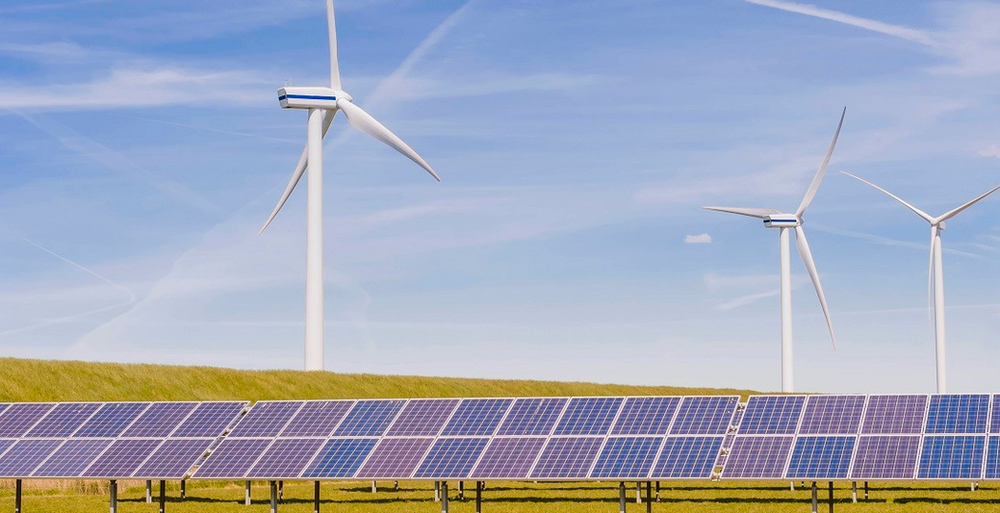
Temperature data shows rapid warming in the past few decades with 2020 being so far the warmest year since 1880, continuing a long-term trend of rising global temperature. According to the World Meteorological Organization “[g]lobal warming and other long-term climate change trends are expected to continue as a result of record levels of heat-trapping greenhouse gases in the atmosphere”. As such, scholars agree that it is vital to reduce our annual GHG (Greenhouse gases) emissions by more than half by 2030 if we really want to limit global warming to “well below 2°”, the goal set by the Paris agreement.
Among the several GHG, Carbon dioxide (CO2) is definitely the largest contributor accounting for around 74% of total emissions. While the economic recession caused by the coronavirus pandemic has caused emissions to drop this year, the level of carbon dioxide in the atmosphere is still increasing, because it can linger in the air for up to a century. Indeed, carbon dioxide levels in the atmosphere hit a new record in June 2021 (419 ppm), a number dangerously close to 450ppm, considered the point of no return.
It is interesting to notice that around three-quarters of GHG emissions (≈73%) come from the energy use (electricity and heat in the graph below). To face this issue investment in renewables and electrification have steadily increased in the past ten years and, in Europe, renewables even represent the main source of electricity, beating fossil fuels.

The rising demand for green energy technologies is leading to a growing demand for some minerals and metals that are key for their manufacture. The types of mineral resources used vary by technology. For instance, lithium, nickel and cobalt are crucial to batteries for electric vehicles, while rare earth elements are essential for permanent magnets that are vital for wind turbines and EV motors.
Unfortunately, the provision of such materials is intertwined with some negative aspects. The first problem is that their rising demand is also prompting the exploitation of the potentially rich deep-sea resources from the ocean floor. According to the US Geological Survey the deep sea contains more critical minerals than all land-based reserves combined but its exploitation is a major threat for marine life and ocean ecosystem.
A second issue is that many of these minerals and metals are highly geographically concentrated. For instance, the Democratic Republic of Congo (DRC) holds almost 70% of all cobalt reserves. Cobalt rising demand in the DRC is generating interest for the extraction by small artisanal, and often unlicensed mines which have witnessed human rights violation, the use of child labour and hazardous working conditions (children make up about 13% of the entire labour force) as well as smuggling and corruption.
Similar is the case of lithium. 56% of all lithium resources are in fact concentrated in the so called «lithium triangle», a desertic area spanning Bolivia, Argentina and Chile. Despite this huge potential, much of the resources cannot be exploited because of impurities that complicate the extraction process and because of high altitudes and wet weather that make evaporation not economically viable, especially in Bolivia. Bolivia’s previous attempts at lithium development resulted in protests, including a hunger strike by local Indigenous people who experience few benefits while having to deal with the environmental consequences of lithium extraction.

As visible from the graph, similar is the issue when considering the processing of these materials, with China clearly taking a dominant position. It is therefore evident that while opting for the previously mentioned new green technologies may solve some geopolitical issues, such as the dependency that many European countries have with Russia and its provision of gas, it also creates new ones.
Moreover, annual production of critical materials must be much higher than current one so as to avoid supply shortages and price spikes. On the one hand, this may risk to further deepen the previously mentioned problems, but on the other hand, ensuring an affordable, sustainable and secure supply of critical materials is vital for the success of the energy transition.
So, what could be a feasible solution to this dilemma? Circularity – when possible – could be the best and greenest solution! Let’s take for instance the example of lithium-ion batteries. Apart from the previously mentioned social and ethical issues, the production of such batteries also leads to the emission of considerable amount of GHG. As such, the need for greater efficiency is extremely high as the cons could otherwise offset the pros of electrification.
It is therefore no surprise that many companies are rising, especially in Europe, to extend the life of such batteries. This is for instance the case of Cling, a Swedish online marketplace aimed at facilitating the connection between providers and buyers of used batteries with goal of increasing circularity. Two are the main projects in this case: remanufacturing or recycling (using the precious materials stored inside such as lithium, cobalt and nickel for producing new batteries).



